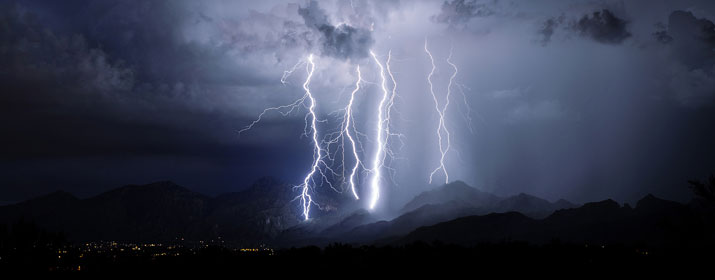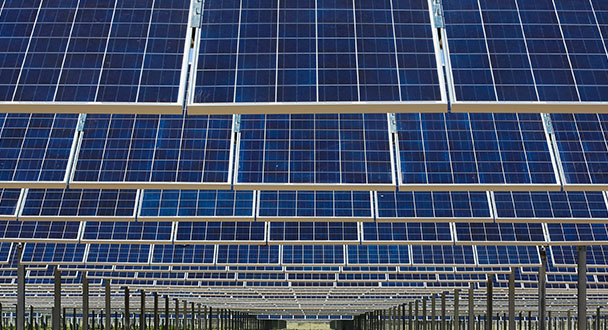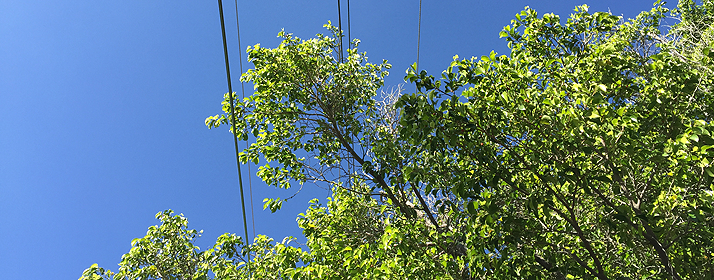
Southern Arizona’s ferocious monsoon storms can bring damaging winds and dangerous lightning that can cause power outages, leaving you in the dark. Just as Tucson Electric Power crews prepare for severe weather all year long, your family can take steps to stay safe before, during and after storms.
Prepare before storms
During monsoon season, check daily weather reports and keep an eye on the sky, as storms can develop quickly. “Tucson’s lightning displays during summer storms are spectacular, but you should take severe weather seriously because it presents a real hazard to personal safety and property,” said Roger Hall, Manager of Safety, Training & Standards. “There are things you can do ahead of time to prepare for storms and possible power outages.”
Ready.gov recommends gathering these and other essential items for a “storm kit” and keeping it in a designated place and replenishing as needed:
- A battery-powered or hand-crank radio and a NOAA weather radio with tone alert
- First aid kit
- Flashlights
- Fresh batteries
- A fully charged mobile phone
- Bottled or fresh water (enough for all household members and pets for up to three days)
- Snacks and nonperishable food items that don’t need to be prepared
- Medications and any other special needs items
Keeping trees and vegetation around your home trimmed can prevent branches and debris from damaging your home or interfering with power lines and causing outages. Be aware of overhead power lines and stay at least 10 feet away from them for your own safety. If you see trees growing into power lines, contact TEP.
“Trees, limbs and debris that come into contact with power lines can conduct electricity – especially when they are wet – so stay away from them,” cautioned Hall.
To prevent frozen food from spoiling if there is an outage, fill plastic gallon milk jugs with water and place them in your freezer. The ice will help keep items cold until power is restored.
Precautions during storms
The saying goes, “When thunder roars, go indoors.” Stay away from windows and avoid certain indoor activities that could pose a risk. “Electricity can travel through electrical wiring and plumbing in your home. So don’t shower, wash dishes or use a corded landline telephone or other electrical devices until the storm has passed,” Hall advised.
You can also take steps to protect your sensitive electronics from power surges caused by lightning. Power surges can overload units, leading to costly repair bills.
“Consider turning off your air conditioning and unplugging non-critical electronics when a storm is imminent to minimize this risk,” suggested Gustavo Maldonado, Risk Management Lead Analyst. “Surge protectors also can help minimize the damage to electronics, such as your television and computer.”
Caution after storms
According to the National Weather Service, lightning from storms in the area can strike more than 10 miles away even though it may be sunny and not raining in your neighborhood. Before resuming normal activities, wait at least 30 minutes from the last clap of thunder.
Because high winds can topple utility poles and power lines, be aware of any fallen lines. “Downed power lines may be energized and are deadly, even if they are not arcing, sparking or smoking,” Hall said. “Always assume a downed power line is energized. Stay a minimum of 10 feet away and call 911 immediately.”
If a power line falls on your vehicle, remain in the car and call 911 using your mobile phone. Warn others to keep away from the power line until help arrives. Never drive over a downed line. If you see crews making repairs, keep your distance from our trucks and equipment for your own safety.
“The safety of our customers, employees and the community will always be our first priority,” Hall said. “We will restore power as soon as it is safe. Customers can help us in our efforts by reporting outages and keeping far away from our crews and equipment.”
Stay updated
You can stay informed of changing weather conditions and outages by using our mobile app, which can be downloaded for free on the App Store or Google Play. The app allows you to view and report outages from your mobile device. You can also view outages on TEP’s outage map.
Outages also can be reported from My Account on tep.com or by calling TEP Customer Care at 520-623-7711. Using our automated system, we will call to let you know when your service has been restored. Reporting outages helps us identify the possible causes, as well as the extent of the outage, so that we can expedite repairs.
For more tips on storm preparedness, visit tep.com/outage-preparation/.






